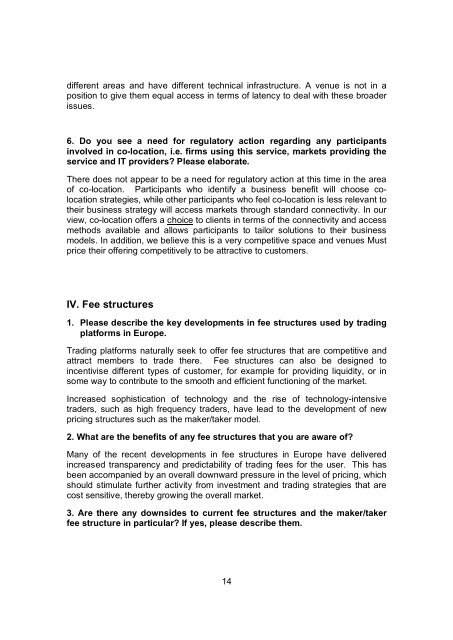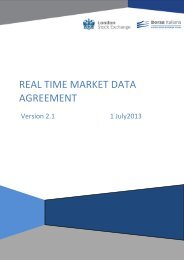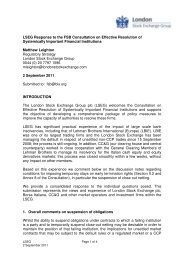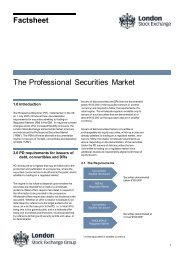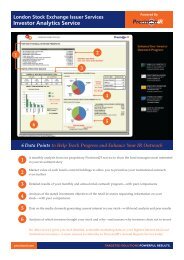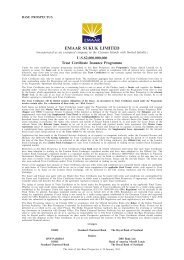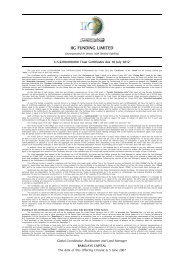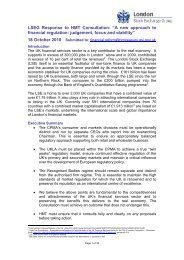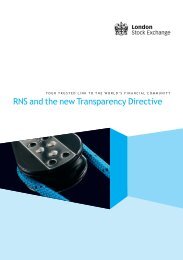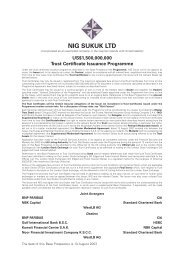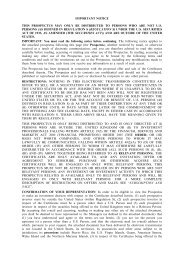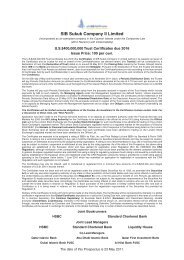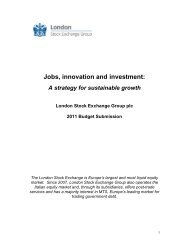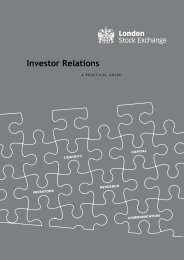I. High frequency trading (HFT) - London Stock Exchange
I. High frequency trading (HFT) - London Stock Exchange
I. High frequency trading (HFT) - London Stock Exchange
You also want an ePaper? Increase the reach of your titles
YUMPU automatically turns print PDFs into web optimized ePapers that Google loves.
different areas and have different technical infrastructure. A venue is not in a<br />
position to give them equal access in terms of latency to deal with these broader<br />
issues.<br />
6. Do you see a need for regulatory action regarding any participants<br />
involved in co-location, i.e. firms using this service, markets providing the<br />
service and IT providers Please elaborate.<br />
There does not appear to be a need for regulatory action at this time in the area<br />
of co-location. Participants who identify a business benefit will choose colocation<br />
strategies, while other participants who feel co-location is less relevant to<br />
their business strategy will access markets through standard connectivity. In our<br />
view, co-location offers a choice to clients in terms of the connectivity and access<br />
methods available and allows participants to tailor solutions to their business<br />
models. In addition, we believe this is a very competitive space and venues Must<br />
price their offering competitively to be attractive to customers.<br />
IV. Fee structures<br />
1. Please describe the key developments in fee structures used by <strong>trading</strong><br />
platforms in Europe.<br />
Trading platforms naturally seek to offer fee structures that are competitive and<br />
attract members to trade there. Fee structures can also be designed to<br />
incentivise different types of customer, for example for providing liquidity, or in<br />
some way to contribute to the smooth and efficient functioning of the market.<br />
Increased sophistication of technology and the rise of technology-intensive<br />
traders, such as high <strong>frequency</strong> traders, have lead to the development of new<br />
pricing structures such as the maker/taker model.<br />
2. What are the benefits of any fee structures that you are aware of<br />
Many of the recent developments in fee structures in Europe have delivered<br />
increased transparency and predictability of <strong>trading</strong> fees for the user. This has<br />
been accompanied by an overall downward pressure in the level of pricing, which<br />
should stimulate further activity from investment and <strong>trading</strong> strategies that are<br />
cost sensitive, thereby growing the overall market.<br />
3. Are there any downsides to current fee structures and the maker/taker<br />
fee structure in particular If yes, please describe them.<br />
14


